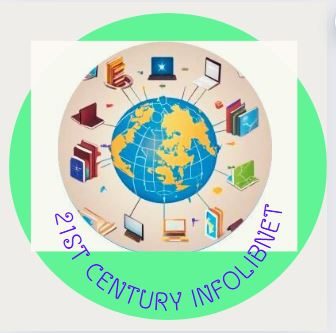
Introduction:
Ranganathan’s Five Laws of Library Science are a set of principles that serve as norms and guidelines for good practice in librarianship. These laws were proposed by Dr. S.R. Ranganathan in 1924 and were first published in his book “Five Laws of Library Science” in 1931. Over the years, there have been discussions and attempts to update and modify these laws to reflect the changing landscape of libraries and information services. In this blog post, we will explore the original conception of Ranganathan’s Five Laws and compare them with new conceptions that have emerged in recent years.
Original Conception of Ranganathan’s Five Laws:
1. Books are for use: This law emphasizes the importance of making books accessible and available for use by library patrons [1]. It promotes the idea that books should not be kept locked away but should be readily accessible to all users.
2. Every person his or her book: This law recognizes that each individual has unique reading preferences and needs [1]. It highlights the importance of providing personalized reading recommendations and ensuring that every person can find the book they desire.
3. Every book its reader: This law suggests that every book has its intended audience, even if it may not be immediately apparent [1]. It emphasizes the importance of building diverse collections that cater to the varied interests and needs of library users.
4. Save the time of the reader: This law acknowledges the value of library users’ time and emphasizes the role of librarians in assisting users in finding the information they seek efficiently [1]. It underscores the importance of providing effective reference and information services.
5. The library is a growing organism: This law recognizes that libraries are dynamic entities that need to evolve and adapt to the changing needs of their users [1]. It emphasizes the importance of continuous development and improvement in library services and collections.
New Conceptions and Modifications:
While the original conception of Ranganathan’s Five Laws remains relevant, there have been discussions and modifications to reflect the evolving nature of libraries and information services. Some of the new conceptions and modifications include:
1. Expanding the definition of books: In the digital age, the concept of books has expanded to include various formats such as e-books, audiobooks, and online resources. The focus has shifted from physical books to encompass a broader range of information resources [2].
2. User-centered approach: The new conceptions emphasize a user-centered approach, focusing on meeting the specific needs and preferences of library users. This includes personalized recommendations, user-driven collection development, and tailored information services [2].
3. Embracing technology: With the advancement of technology, libraries have embraced digital tools and platforms to enhance access to information. This includes the use of online catalogs, digital collections, and virtual reference services [2].
4. Community engagement: Libraries are increasingly seen as community hubs, fostering connections and providing spaces for collaboration and learning. New conceptions emphasize the role of libraries in engaging with the community and addressing local needs [2].
Conclusion:
Ranganathan’s Five Laws of Library Science, in their original conception, laid the foundation for good library practices. While these laws remain relevant, new conceptions and modifications have emerged to reflect the changing landscape of libraries and information services. These new conceptions emphasize a user-centered approach, the use of technology, and community engagement. By embracing these new conceptions, libraries can continue to evolve and meet the needs of their users in the 21st century.
Learn more:

